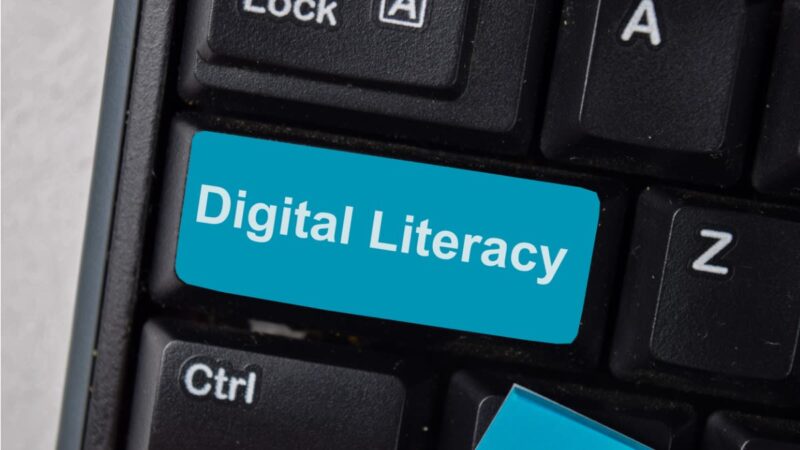By next year, the government is meant to have achieved its data and digital transformation goals set out in its ‘Transforming for a Digital Future’ roadmap. A key part of this roadmap is acquiring the best digital talent alongside upskilling civil servants in their digital capabilities and knowledge.
Specifically, by 2025, The Central Digital and Data Office should have upskilled “at least 90% of senior civil servants on digital and data essentials, with learning embedded into performance and development standards”. How far along the government is in meeting this target and the level of skills learned is not yet known.
But while these are the basic digital essentials, when it comes to digital transformation projects – which are also key to building this digital future – civil servants are still not IT literate. There is a mismatch in technical knowledge between internal staff and external vendors. And this means projects can run into many problems, including missed targets for delivery and cost overruns.
So, what does the government need to do to bridge this gap?
Internal IT illiteracy

The current model for digital transformation projects relies far too heavily on external vendors, without the necessary internal IT knowledge to keep an eye over the project’s progress and expected outcomes.
Civil servants need to be able to offer a level of critical review: for example, understanding that the changes being made should be delivered in six months but, in reality, they’re being rushed in six weeks. But, as they don’t have this internal knowledge, the government is unsure of how to challenge external partners.
Often, what you get is a situation where tech-literate employees are the people running the project but the government leaders making the decisions are non-technical. This is a big challenge in itself, as naturally the right people need to be at the top of the project.
It isn’t about picking the cheapest option or vendor – it’s determining the right path. Upskilling or onboarding such talent might not be cost-effective, but it will put the government in a much better position in the long run.
The impact on digital transformation projects

The lack of IT literacy internally has several implications for digital transformation projects.
Generally, external teams are getting on with their tasks at arm’s length. And this means that both internally, due to IT illiteracy, and externally, due to lack of collaboration, there can be a lack of understanding of what’s being delivered and how.
There’s also a focus on the wrong elements. If an organization wants to go through a digital transformation project, they bring in the right people in-house – but the government goes external. This reliance on outside influence means that by the time an individual gets up to the level of making decisions, their in-house expertise becomes 10-15 years out of date.
When it comes to time and budget requirements, the government can sometimes be taken for a ride with their projects – its tendency to be solutions-led means it is an easy target for pricing and can be seen as a soft touch. For example, in the private sector it would be seen as a red flag if the cost suddenly went up by 10%, but not in the public sector. There can be a failure in the public sector to properly define the project’s requirements, meaning time and budget scope creep occurs and projects don’t achieve the same impact as the private sector.
How to bridge the gap and restructure projects

The first port of call is to get technically literate staff in decision-making roles. There is a heavy reliance on consultancy but the civil service should have its own knowledge and be IT literate. Projects shouldn’t just involve an external taskforce, but have civil servants on board too so that they have an invested stake in them.
It’s crucial to find the optimum balance between internal skills and external resources. Instead of chucking more money at vendors to solve the problem, it’s about being IT literate. Senior civil servants not only need to be upskilled in basic digital skills but also in IT project management.
Moreover, carrying out risk assessments is key to influencing how a project is run. Currently, it feels like public sector projects are not run this way. They spend huge amounts of money treading water and not actually changing things. Can they set out clear time and budget scopes alongside aims to ensure projects are delivered effectively and don’t become a risk?
Once products run out of support time, for example, the government can spend a huge amount of budget keeping them without seeking other inventive solutions. Can it restructure this strategy? So, rather than giving money to external companies for outdated systems, it considers ways of increasing the lifespans of current systems. This means the apps still run without needing the ‘latest and greatest’ products (which don’t necessarily solve the issues).
Upskilling will drive the digital future

As the vision for the government’s digital future roadmap approaches, there is still much to do in its ambition to upskill its civil servants. There is currently too much reliance on external resources without the necessary internal IT literacy to oversee projects. Therefore, the government must remodel how projects are carried out and balance internal skills with external support.
Building internal IT literacy means there are decision makers equipped to ensure projects are delivered effectively and within budget. A focus on enhancing the reliability of existing systems, rather than chasing new products, can help drive this strategy. If the government is to realise its digital future, then its civil servants must have the IT literacy to be invested in its success.
Stephen Earl, Director at Cloudhouse
